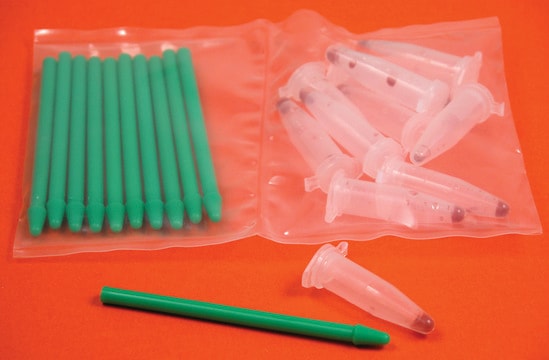D8938
KIMBLE Dounce tissue grinder set
2 mL complete
Sinonimo/i:
885300-0002, Dounce, Dounce Homogenizer, Glass Tissue Grinder, KIMBLE Tissue Grinder, KONTES, Pestles, Tissue Grinder, Tubes
About This Item
Prodotti consigliati
Materiali
glass
Caratteristiche
autoclavable
Produttore/marchio commerciale
Kimble® 885300-0002
Gioco pestello A-omogeneizz.
0.0030-0.0050 in.
Gioco pestello B-omogeneizz.
0.0005-0.0025 in.
Volume d’esercizio × lungh.
2 mL × 60 mm
Cerchi prodotti simili? Visita Guida al confronto tra prodotti
Categorie correlate
Descrizione generale
Caratteristiche e vantaggi
Note legali
Certificati d'analisi (COA)
Cerca il Certificati d'analisi (COA) digitando il numero di lotto/batch corrispondente. I numeri di lotto o di batch sono stampati sull'etichetta dei prodotti dopo la parola ‘Lotto’ o ‘Batch’.
Possiedi già questo prodotto?
I documenti relativi ai prodotti acquistati recentemente sono disponibili nell’Archivio dei documenti.
I clienti hanno visto anche
Il team dei nostri ricercatori vanta grande esperienza in tutte le aree della ricerca quali Life Science, scienza dei materiali, sintesi chimica, cromatografia, discipline analitiche, ecc..
Contatta l'Assistenza Tecnica.










